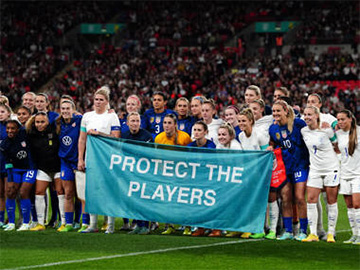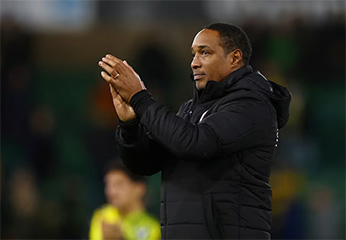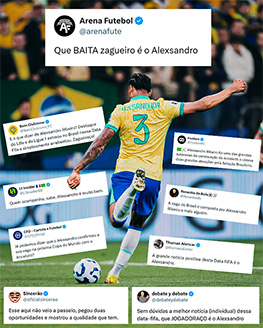International Football
FIFA Confederations Cup Hits Goal Milestone!
BY KUNLE SOLAJA
When Chile’s Alexis Sanchez found the net in the Thursday night Group B encounter of FIFA Confederations Cup against Germany, it was a milestone goal in the history of the competition.
The sixth minute goal was not just the earliest goal that Germany have conceded in the FIFA Confederation Cup, it is the 400th goal of the competition which began as Intercontinental Tournament for King Fahd’s Cup in 1992.
Sports Village Square recalls that the first scorer of the tournament was Fahad Al Bishi of Saudi Arabia who found the net in the encounter with the United States on October 15, 1992.
Africa has also helped in shaping the record books of the FIFA Confederations Cup. Sports Village Square can confirm that the 100th goal of the competition was scored by Egypt’s Yaser Radwan in the July 25,1999 match with Bolivia.
On June 23, 2003, Turkey’s Gokdeniz Karadeniz scored the 200th goal of the competition while American, Jozy Altidore scored the 300th goal in the encounter with Spain on June 24, 2009 in South Africa.
International Football
Players’ union, FIFPRO, wants 20-minute halftimes, more cooling breaks amid extreme heat

Global players’ union FIFPRO is exploring whether extending halftime to 20 minutes and introducing more frequent cooling breaks could better protect players from extreme heat.
Nine of the 16 host cities for the 2026 World Cup face conditions considered “extreme risk” for heat-related illness.
Atlanta, Boston, Dallas, Guadalajara, Houston, Kansas City, Miami, Monterrey and Philadelphia are expected to face dangerous levels of heat and humidity, posing player safety concerns and fuelling calls for mandatory cooling aids or schedule changes.
FIFPRO’s heat risk assessments are based on wet bulb globe temperature (WBGT), a measure combining temperature, humidity, solar radiation and wind speed to estimate how environmental conditions affect the body’s ability to cool itself.
Under FIFPRO guidelines, a WBGT reading above 28 degrees Celsius indicates conditions in which matches should be postponed or rescheduled to protect players’ health.
By comparison, world soccer governing body FIFA’s own guidelines set the extreme risk threshold higher, at 32 degrees Celsius WBGT – but even by that standard, six of the nine cities are still projected to exceed safe limits.
Major League Soccer in the U.S. has a threshold of 29 degrees Celsius WBGT.
“Cooling breaks at the 30th minute and 75th minutes are quite traditional, but from a physiological point of view it does not make sense,” said Vincent Gouttebarge, FIFPRO’s Medical Director.
“Even if you ingest more than 200 millilitres of fluid, you already cannot take it all. So I would definitely like to see some project where we look at the efficacy of perhaps more frequent but shorter cooling breaks – every 15 minutes, rather than only one during each half.”
LONGER HALFTIMES
Gouttebarge also questioned whether the traditional 15-minute halftime interval is sufficient when matches are played in extreme heat.
“You can imagine that halftime of 15 minutes might not be enough in order to decrease the core temperature,” he said.
“It could be a halftime of 20 minutes which would be significant. That has been shown in the laboratory and FIFPRO, together with the national union in Portugal in August, we are going to test this kind of mitigation strategy.”
The urgency of stronger heat protocols became clear at this month’s Club World Cup where two matches — Benfica-Bayern Munich in Charlotte and Chelsea-Esperance in Philadelphia exceeded the WBGT threshold FIFPRO considers unsafe.
“According to our position, those games should have been postponed later that day or rescheduled,” Gouttebarge said.
FIFPRO officials acknowledged that FIFA has responded constructively during the tournament by lowering thresholds for mandatory cooling breaks and improving pitch-side hydration, but stressed that proactive planning is critical.
“FIFA have been quite responsive once the tournament was under way,” said Alex Phillips, FIFPRO General Secretary.
“They have actually modified how they’ve been dealing with heat during the matches based on FIFPRO’s input, which is credit to the work of the team. Obviously, it would have been better if that happened in advance, but it’s better that they have adapted.”
FIFPRO warned that the risks highlighted at the Club World Cup are a preview of what players could face at the expanded 2026 World Cup.
“This is not just affecting the Club World Cup, but also future tournaments either in the U.S. or elsewhere in the world,” said Alexander Bielefeld, FIFPRO Director of Policy & Strategic Relations.
“We need a better balance between commercial interests and the health and safety of players,” he added, referring to earlier kick-off times to accommodate European television audiences.
-Reuters
Join the Sports Village Square channel on WhatsApp: https://whatsapp.com/channel/0029Vaz7mEIGk1FxU8YIXb0H
International Football
Former England and Man Utd midfielder Ince charged with drink-driving

Former Manchester United and England midfielder Paul Ince has been charged with drink-driving, police said on Monday.
Ince, who earned 53 caps for England and won two Premier League titles during his six years at United, has been released on bail and will appear in court on July 18.
“The incident involved a black Range Rover which had collided with the central reservation barrier. Officers attended the scene and arrested a 57-year-old man,” the Cheshire police said in a statement.
“Paul Ince, of Quarry Road, Neston, has since been charged with drink-driving.”
Reuters has contacted Ince’s representative for comment.
After retiring as a player, Ince led Milton Keynes Dons to a League Two title in 2007-08. He most recently managed Reading during 2022-23.
-Reuters
Join the Sports Village Square channel on WhatsApp: https://whatsapp.com/channel/0029Vaz7mEIGk1FxU8YIXb0H
International Football
From garbage collector to Starman of Ancelotti’s Brazil team: the story of Ribeiro

“I was without a team for a year and a half, doing trials… and no club in Brazil wanted me.!” Alex Ribeiro
Alexsandro Victor de Souza Ribeiro (Rio de Janeiro, 1999) was, until a few days ago, a semi-unknown to the general public in Brazil.
However, Carlo Ancelotti, impressed by his strong performance against Real Madrid in the Champions League, insisted on calling up the Lille centre-back… and giving him his debut.
Not only that. He started alongside Marquinhos against Ecuador (0-0) and Paraguay (1-0) and helped the Seleçao keep two consecutive clean sheets for the first time in the qualifying rounds.
Alex, as he likes to be called, impressed with his 1.92 meters (6′ 1″) frame and confidence. According to ‘R10Score’, he was the Brazilian player who completed the most actions with the ball (186) and the second with the most cuts (11).
He completed 154 of the 166 passes he made (92% accuracy) and won 12 of the 16 duels he was involved in: 5 of 7 at ground level and 7 of 9 in the air. “A gentleman defender,” boasted the official Ligue 1 Portuguese account.
His path to the elite wasn’t easy. “I don’t think you know this, but this is my first game as a professional in Brazil. Strange, isn’t it? There’s nothing better. To debut in Brazil like this, with a win and qualification,” he boasted after defeating Paraguay.
These first few days with Ancelotti have been unique; I’ll remember them for the rest of my life. I’ve responded well not only to myself, but also to the coach and the Brazilian people. I was able to demonstrate my ability to those who had doubts. Few people give me the opportunity that the manager has given me,” he insists
The Lille centre-back took his first steps in Flamengo’s youth system, where he even met Vinicius.
“When we played against Real Madrid, Vini came up to me and hugged me. He said, ‘I’m glad to see you here, brother.’ That inspired and motivated me even more,” he told ‘Globo Esporte’.
‘Fla’ cut him off. He had to make a living as a street vendor. He also collected trash, especially cans. “I was without a team for a year and a half, doing trials… and no club in Brazil wanted me, so I went to Europe to play in Portugal’s Third Division.”
Praiense (2018-20), Amora (2020-21), and Chaves (2021-22)—the latter already in the Second Division—were his springboard to Lille. The Bulldogs signed him in 2022-23 for €2 million. He has become a more than worthy successor to his compatriot Gabriel Magalhaes.
“Little by little, my name is spreading. My football is reaching everywhere. This includes Brazil,” he said before making his debut with the Seleçao. Now that he’s made it, he has another challenge: “I want to continue it.”
-Marca
Join the Sports Village Square channel on WhatsApp: https://whatsapp.com/channel/0029Vaz7mEIGk1FxU8YIXb0H
-

 OBITUARY10 hours ago
OBITUARY10 hours agoBREAKING: Nigerian Goalkeeping Legend Peter Rufai is dead
-

 WAFCON1 week ago
WAFCON1 week agoSuper Falcons Land in Morocco, Eye Historic ‘La Decima’ Women’s AFCON Title
-

 FEDERATION CUP5 days ago
FEDERATION CUP5 days agoKwara United Clinch Historic First Title as President Federation Cup Final Goes to Penalties for the 18th time
-

 FEDERATION CUP5 days ago
FEDERATION CUP5 days agoRivers Angels Crowned 2025 Female Federation Cup Champions After Penalty Shootout Thriller
-

 CLUB WORLD CUP1 week ago
CLUB WORLD CUP1 week agoChelsea’s Delap shows promise in Jackson’s absence ahead of Benfica showdown
-

 WAFCON2 days ago
WAFCON2 days agoCAF Celebrates Nigeria’s Flawless 1998 Triumph as WAFCON 2024 Countdown Hits Three Days
-

 CHAN3 days ago
CHAN3 days agoDefending Champions Senegal Open Training Camp Ahead of CHAN 2025 Clash with Nigeria
-

 WAFCON7 days ago
WAFCON7 days agoOnome Ebi: A Towering Legacy in the Women’s Africa Cup of Nations




